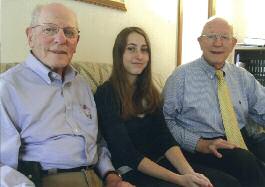Occasionally on the news you hear journalists call vaccine research a “cat-and-mouse” game. That’s only partially true. It misses the point that, if the cat doesn’t get its claws into the mouse, sometimes the mouse turns around and kills the cat. This game has been going on for most of recorded history and, as we have become better-educated about the nature of viruses and vaccines over the last 18 months, it’s safe to say that we have gained a greater respect for both the cat and the mouse.
Thankfully, in 2021, the cat seems to have gained the upper hand. Because, for most of human history, let’s face it: The mouse was winning. Until relatively recently, in fact, unchecked viruses, diseases, infections and a fundamental misunderstanding of how the body works doomed most people to an early grave.
Which explains why the idea that human beings might somehow create resistance or immunity to serious illness stretches back centuries—and how we arrived at the current state of vaccine technology. Long before scientists understood how epidemics spread, or even what they were, many cultures in Europe, Asia and Africa subscribed to the belief that exposure to a small amount of virus could boost immune response and prevent large-scale deaths. As the vaccines developed in late 2020 and early 2021 helped us turn the corner on COVID-19, it is worth a look back at how we got to where we are today.
The Scourge of Smallpox
The initial breakthrough dates back more than 1,000 years to China, where we find the first mention of variolation experiments. Variolation takes its name from the scientific name for smallpox, variola. Smallpox killed an estimated one-third of the individuals who contracted the disease, and left its survivors hideously scarred and often sterile or blind. A ship entering an ancient harbor with reports of smallpox aboard was often quarantined until the disease had run its course. The root of the word quarantine, with which we are now all too familiar, is quarantena. It originated with the policy in Venice during the bubonic plague of the 1300s and 1400s, when all ships arriving at the Italian port were compelled to anchor for 40 days before sailors could come ashore. For the record, the “quarantine” imposed on travelers during the coronavirus pandemic isn’t a quarantine at all; technically it is medical isolation.
Variolation involved various methods of introducing a small amount of biological material taken from an infected patient into an uninfected person. Among the ways this was accomplished was with a needle piercing a smallpox pustule and then being scraped across the skin of a healthy individual. Another was the collection of scabs from a smallpox victim, which were then ground up and rubbed into an incision in the skin—or blown up the healthy person’s nose. Sometimes a needle and thread that had been pulled through a smallpox pustule were pulled through a small scratch in the uninfected patient’s skin. The goal was to induce a very mild version of the infection, which (fingers-crossed) would subside in a few weeks and create a strong resistance to smallpox.
Early adopters of variolation did not include England, which considered itself the world leader in medical expertise, which it wasn’t. However, enough prominent physicians had used it effectively in the 1600s and early 1700s to finally convince the government to approve its use against smallpox in the early 1720s, with the full support of the Royal Family. Remember, at this point scientists had almost no understanding of how viruses and bacteria caused disease. Predictably, there was public outcry against variolation—the precursor to today’s anti-vaxers—not just in Great Britain, but in the American colonies, as well. To many, giving someone a dreaded disease they didn’t have seemed crazy and dangerous. In Boston, clergyman Cotton Mather was the target of a bomb for his advocation of variolation. The explosive hurled through his window contained a note that read You dog, dam [sic] you; I’ll inoculate you with this; with a pox to you.
Mather was a controversial public figure who had his hands in just about everything in the Massachusetts colony and was nothing if not a paradox. For example, he was devoted to importing Newtonian science to the American wilderness on the one hand while, on the other, he was the guy who set up the Salem Witch Trials. Mather learned of variolation not from Newton or other British scientists but from a Libyan slave he received in 1703 as a gift, who he rechristened Onesimus (his real name is lost to history). Curious about the scars on the man’s body, Mather listened as Onesimus explained how North African cultures dealt with smallpox. He then spearheaded a variolation campaign during an outbreak in Boston that yielded spectacular results. And took all the credit, of course.
Within a generation, our Founding Fathers had all hopped on the variolation stagecoach. Benjamin Franklin convinced English physician William Heberden to produce a pamphlet touting the success of smallpox inoculation (a word borrowed from horticulture, originally related to the grafting of plants) and distributed it free of charge throughout the 13 colonies. Two decades earlier, Franklin had lost a son at age four to smallpox. The pamphlet included do-it-yourself instruction for home inoculations—a forerunner of YouTube videos for DIYers. George Washington contracted smallpox as a young man, which some have theorized was responsible for his inability to produce offspring with Martha. True or not, it did make him immune to the smallpox outbreaks that would ravage military camps during the American Revolution. One of Washington’s lesser known edicts as commander of the Continental Army was that his soldiers had to be variolated. During Thomas Jefferson’s presidency, he personally conducted inoculation experiments on his slaves at Monticello, demonstrating both his enlightened approach to science and his unenlightened regard for human freedom and dignity.
Vaccines Arrive
There were worse jobs for young ladies in 18th century Europe than being a milkmaid, but like most occupations it came with its own set of risks. Repeated contact with a cow’s udder, especially by someone with broken or abrased skin common to farm work, was an invitation to contract cowpox, which produced pustules on the hands and forearms. The disease was considered an occupational hazard—rarely serious and, once a girl got it, she didn’t get it again. And, farmers began to notice, those girls didn’t contract smallpox, either—even after close contact with workers or family members who did. In 1774, smallpox began tearing through the county of Dorset in the south of England. A farmer named Benjamin Jesty used fluid from cowpox lesions to successfully inoculate his wife and children against smallpox. Over the next 20 years, similar stories caught the attention of scientists. Another piece of the puzzle was that British cavalry officers tended to dodge smallpox outbreaks, presumably from exposure to horsepox, a close relative of cowpox.
In 1796, English scientists Edward Jenner made the big breakthrough. He took a sample of pus from the lesion of a cowpox-infected milkmaid and injected it into an 8-year-old boy who had never had smallpox. Six weeks later he injected smallpox into the boy, who was the son of his gardener—which poses some uncomfortable questions about Jenner’s moral compass—but lo and behold, there was no reaction! Jenner called this process vaccination, from vacca, the Latin word for cow. Recent DNA research suggests that the disease Jenner was working with may have been transferred from horses to cow, possibly through farriers, whose farm duties often involved shoeing horses and milking cows. In which case you could say that we are all getting equivaccinations this year.
Vaccinations caught on quickly in the United States and, in 1813, President James Madison signed a bill creating the National Vaccine Agency. Part of that bill waived postage fees for vaccine material. England went one better, making vaccination of infants mandatory; if parents refused, they faced possible imprisonment. In 1863, little more than halfway through Abraham Lincoln’s first term as President, he contracted smallpox and was desperately ill for a month before recovering. His valet, William Henry Johnson, was not so lucky. He caught smallpox from Lincoln and was dead by the end of January. He had worked with Lincoln going back to his Springfield days. Some historians posit that the president contracted the disease around the time he delivered his Gettysburg Address, which in retrospect had all the earmarks of a textbook super-spreader event.
The next breakthrough in vaccines was discovered, somewhat accidentally, by Louis Pasteur in 1879. The French biologist was the first person to create a vaccine in a lab. An oversight by an assistant during an experiment with chicken cholera demonstrated that exposure to oxygen makes bacteria less deadly. This led the way to several more discoveries, including the rabies vaccine in 1885. By the turn of the century, researchers in the U.S. and Europe were beginning to get the upper hand on typhoid and cholera and, by World War I, the first vaccines for these diseases were becoming available.
At War with Disease
There were setbacks, of course, including a terrible story here in New Jersey, where nine children died from tainted smallpox vaccines. That incident led to the Biologics Control Act, which was passed in 1902. However, then as now, the increasing involvement of the government in public health was not always appreciated. In England and America, there was small but vocal opposition to vaccinations, mostly citing an infringement on personal freedom. Massachusetts was the first state to make smallpox vaccinations mandatory and the resulting lawsuit went all the way to the Supreme Court. In 1905, the court upheld the constitutionality of the program in Jacobson v. Massachusetts. In 1909, Americans learned the story of Mary Mallon, the woman dubbed “Typhoid Mary” by the press. She was what we now call an asymptomatic spreader of the disease, who worked as a cook for several wealthy families and, later, for hospitals, hotels and restaurants. Everywhere she worked (often gaining employment under a fake name) a typhoid outbreak soon followed. Mallon finally had to be quarantined on North Brother Island, near Riker’s Island in New York’s East River.
The need for further progress on the vaccine front was made particularly clear in the waning days of the First World War, when the Spanish Flu—which probably originated in a U.S. Army camp in Kansas—spread across the planet and killed tens of millions people. It was a particularly powerful version of the H1N1 influenza virus; it took a particularly high toll on young, healthy adults, who normally weathered the flu without incident. It spread fast, killed quickly and if a patient’s lungs filled with fluid, there was nothing doctors could do. If you got it, you went to bed and waited:
On the last day of that year, 1918, I went up to the shop with a bad cold. Influenza had been raging in [Norwood, MA], the hospital was crowded, and there were deaths almost daily. About two hours after going to work, I collapsed. It had got me. I was taken home, went to bed and a doctor was summoned. I was past 70, but he was the first doctor since my birth who had ever been called to treat me. He found me in great pain, temperature 104, but said my lungs were not affected. For several days as I lay in bed, I did a deal of thinking. I thought it was probable that I was near the end of the race, but I had no dread. I was comforted that I had been able to keep up the payments on my life insurance, and that my wife would have the use of it in her old age.
This patient, my great-grandfather George Stewart, survived to write this account before he died, in 1925. He was never the same, however. George was unable to walk more than a short distance or do anything that required strength, including ascending the flight of stairs leading to the second floor of his home. In his defense, I know those stairs. They are weirdly steep and are available if a movie company is interested in remaking the Hitchcock classic Vertigo. The point here is that the world became fixated on understanding how the influenza virus mutates and spreads, the long-term impact for survivors, and what could be done to give humans a fighting chance. A century has passed and we are still addressing these challenges.
How To Make a Vaccine
The first important step in creating an effective, mass-produced flu vaccine was to develop a process for growing (or culturing) viruses in large quantities. Scientists already knew how to culture bacteria—give them a comfy medium and they’re off to the races—which was the key to making vaccines for bacterial illnesses. However, viruses don’t reproduce on their own. A virus must first infect a cell before using the cell to make copies of itself, and at the time of the Spanish Flu there was no method for growing viruses outside of a living host. The breakthrough came in the mid-1930s, when two English researchers discovered separately that the flu virus could be grown on the membranes of fertilized hens’ eggs—and soon after isolated the first neutralized antibodies. One of the U.S. scientists working on the flu vaccine at this time was Dr. Jonas Salk, who used what he’d learned in the 1930s to tackle polio in the 1950s.
The U.S. President during this era was Franklin Roosevelt, who had been stricken with polio as a young man. His inability to walk or stand was the best-kept/worst-kept secret in America. During a 1938 radio broadcast, entertainer Eddie Cantor, whose program had an audience of millions, pitched the idea of sending dimes to the White House to help fund polio research. Listeners sent more than 2 million dimes to Washington, triggering a grassroots effort that involved several more national celebrities and eventually became known as The March of Dimes. A year after FDR passed away, his profile replaced the head of the winged liberty on the silver 10-cent piece, commonly known as the Mercury dime. Reach into your pocket and you’ll notice that this coin still bears his image.
Building on a wave of discoveries by virologists and epidemiologists, over the next three decades, life-saving vaccines came fast and furious, including increasingly effective flu vaccines, Diphtheria-Tetanus for infants, and measles and mumps vaccines. The crowning achievement of the post-war era was the creation of an effective injectable polio vaccine by Dr. Salk. Salk’s work followed several research breakthroughs dating back to the 1930s and was ready for testing in 1952, the same year polio cases in the U.S. surged over 50,000. Testing proceeded over the next two years, culminating in the Francis Field Trial, which involved more than 1.8 million schoolchildren. It was the largest medical experiment in history at that time and the results were extremely positive, despite a one-man anti-vax campaign waged by gossip columnist Walter Winchell. Winchell “uncovered” that several monkeys had died during initial testing and labeled the Salk vaccine a killer, likening it to a phony cancer cure—and adding that even if the vaccine were 99% effective, well, that wasn’t good enough. Winchell was what we would now call an “influencer”…more than 150,000 parents pulled their children out of the study.
Nevertheless, the Salk vaccine was licensed in 1955 and, thanks to an ingenious “rocking bottle” manufacturing method developed by a team led by Canadian biochemist Leone Farrell, went instantly into mass production. An interesting sidenote is that when Salk traveled to Toronto to meet with Farrell’s team, she was barred from the reception because it was held in a men’s-only club. Farrell was an astonishing figure in medicine who is largely forgotten today; she later devised a way to accelerate penicillin production.
Where We Are, Where We’re Going
Over the last 30 years, vaccines have successfully tackled countless health issues in the U.S. and around the world, including hepatitis, shingles, cervical cancer and the H5N1 avian flu. However, viruses are nimble and clever. When faced with obstacles, they do what we do: evolve and mutate in order to survive. That’s why we get flu shots every year and why sometimes they are only 50% effective. And that’s why scientists are still looking for ways to eradicate tuberculosis, malaria, Lyme disease and hepatitis C. And HIV. And the common cold.
Keep in mind, too, that it takes a billion or more dollars and a decade of research and testing to develop a viable vaccine, and even with government funding, often private industry and investment funds determine what’s “worth” the time, money, effort and risk…and what’s not.
The arrival of COVID-19 on American shores in the winter of 2019–20 and our less-than-stellar response to the virus (including the politicizing of mask-wearing) will leave a public-health and also a cultural legacy that is certain to be with us for a long time. What we will probably forget pretty quickly is how vaccines were going into arms within a year of the start of the pandemic. That is an insanely short period of time to develop a vaccine for a virus that seemed to have everyone baffled at first.
How did it happen so quickly? The short answer is computers. Once the COVID-19 genome was posted by Chinese researchers, the vaccine could essentially be created on a computer screen and then go right into manufacturing. Also, no one in the vaccine game starts from scratch or goes it alone. The COVID-19 vaccines out there now had a scientific running start, which was further accelerated by Operation Warp Speed. The running start in this case were the multiple safe and effective vaccine platforms created since Edward Jenner started tinkering with cowpox. COVID researchers looked at which ones were most likely to offer the highest level of immunity and produce the least side effects, and then got right into determining which proteins, or viral antigens, would generate an immune response that would protect people from the disease.
As it turned out, the quick-turnaround vaccines used mRNA and vector-based platforms. The vector-based strategy was developed in the fight against SARS. Since the viral enemy is technically SARS-CoV-2, that seems logical. The mRNA platform was utilized in treating Zika a few years ago. What both have in common is that they did not exist in the 20th century. They are relatively new but appear to be safe. What is still in question is how long vaccinations will last—like the flu vaccine, we may need a new one every year—and whether they will be effective against the variants that will almost certainly develop in the coming months.
So is 2021 the Year of the Cat? Did we catch and kill the mouse? It may be too early to claim total victory. The mouse undoubtedly has a few more tricks up its sleeve. Also, human behavior is nothing if not unpredictable; even when Americans are “fully vaccinated,” there will be outliers who refuse the needle. And finally, just because we are vaccinated, that doesn’t mean they are. And by they I mean a billion or more people in developing countries who are unlikely to be offered, or avail themselves of, a vaccine—or who fall prey to supply-chain problems, as happened in India this past spring.
This is where the mouse loves to play. Hopefully the cat is watching. EDGE

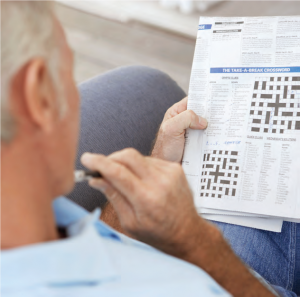


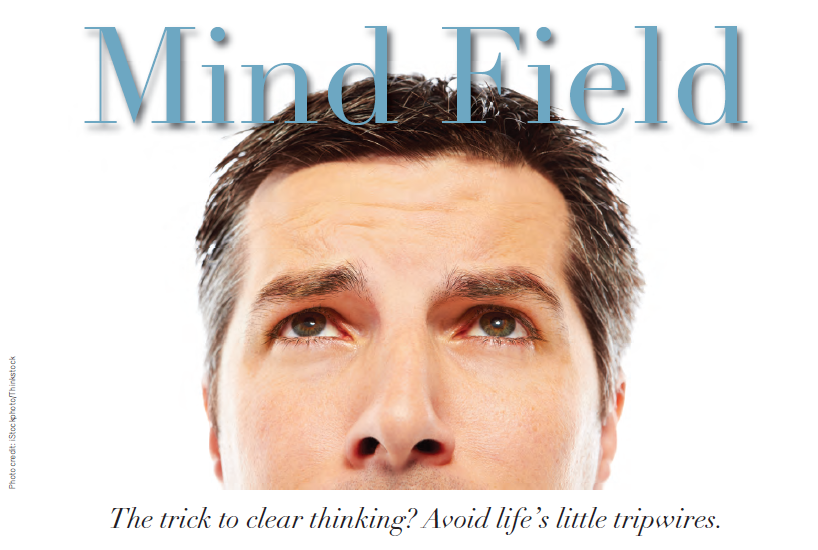
 Pancreatic Cancer May Not Be A Death Sentence When we hear the words Pancreatic Cancer we shudder. And rightfully so. By the time the first symptoms develop—unexplained abdominal pain, weight loss, poor appetite, jaundice—and the tumor is picked up by a CT scan or MRI, the disease is uniformly fatal. According to Dr. Dan Ramasamy, a gastroenterologist at the Center for Digestive Diseases in Union, Pancreatic Cancer actually can be cured—when caught in its earliest stages. Early stage diagnosis is accomplished through Endoscopic Ultrasound (EUS). A special ultrasound device installed on the tip of the endoscope enables examination from the stomach through to the pancreas. With EUS, the pancreas can be visualized with high-quality ultrasound images, detecting tumors as small as a few millimeters, which can be missed by a CT Scan or MRI. According to Dr. Ramasamy, who performs this procedure, a biopsy can be taken through the stomach wall with fine needle aspiration (FNA) and sent for evaluation. If still in its earliest stage, the cancer is curable by surgery.
Pancreatic Cancer May Not Be A Death Sentence When we hear the words Pancreatic Cancer we shudder. And rightfully so. By the time the first symptoms develop—unexplained abdominal pain, weight loss, poor appetite, jaundice—and the tumor is picked up by a CT scan or MRI, the disease is uniformly fatal. According to Dr. Dan Ramasamy, a gastroenterologist at the Center for Digestive Diseases in Union, Pancreatic Cancer actually can be cured—when caught in its earliest stages. Early stage diagnosis is accomplished through Endoscopic Ultrasound (EUS). A special ultrasound device installed on the tip of the endoscope enables examination from the stomach through to the pancreas. With EUS, the pancreas can be visualized with high-quality ultrasound images, detecting tumors as small as a few millimeters, which can be missed by a CT Scan or MRI. According to Dr. Ramasamy, who performs this procedure, a biopsy can be taken through the stomach wall with fine needle aspiration (FNA) and sent for evaluation. If still in its earliest stage, the cancer is curable by surgery. are more likely than children of average intelligence to be heavy drinkers when they grow up. The studies—National Longitudinal Study of Adolescent Health (US) and National Child Development Study (UK)—took into account religion, sex, race, ethnicity, marital status, number of children, education, earnings, satisfaction with life, frequency of socialization with friends, depression, number of recent sex partners, childhood social class, mother’s education, and father’s education—and still came up with the same results. Satoshi Kanazawa, an evolutionary psychologist and author of Why Beautiful People Have More Daughters, offered one interesting theory for this phenomenon. Intelligent people aremore likely to be “early adopters,” so it makes sense they would adopt beer, wine and distilled spirits—which are acquired tastes as opposed to evolutionary staples.
are more likely than children of average intelligence to be heavy drinkers when they grow up. The studies—National Longitudinal Study of Adolescent Health (US) and National Child Development Study (UK)—took into account religion, sex, race, ethnicity, marital status, number of children, education, earnings, satisfaction with life, frequency of socialization with friends, depression, number of recent sex partners, childhood social class, mother’s education, and father’s education—and still came up with the same results. Satoshi Kanazawa, an evolutionary psychologist and author of Why Beautiful People Have More Daughters, offered one interesting theory for this phenomenon. Intelligent people aremore likely to be “early adopters,” so it makes sense they would adopt beer, wine and distilled spirits—which are acquired tastes as opposed to evolutionary staples. Stamping Out Alzheimer’s The effort to understand, treat and perhaps ultimately prevent Alzheimer’s Disease depends on raising funds and awareness. In May, these goals got some help from Maryland Senator Barbara Mikulski, who introduced a resolution in the House of Representatives urging the U.S. Postal Service to issue a special stamp to help raise money for Alzheimer’s research. Mikulski’s own father was one of an estimated 5.4million Americans diagnosed with the disease. By voluntarily paying more than the normal postage rate for the Alzheimer’s stamp, people would contribute directly to the search for a new treatment or a cure.
Stamping Out Alzheimer’s The effort to understand, treat and perhaps ultimately prevent Alzheimer’s Disease depends on raising funds and awareness. In May, these goals got some help from Maryland Senator Barbara Mikulski, who introduced a resolution in the House of Representatives urging the U.S. Postal Service to issue a special stamp to help raise money for Alzheimer’s research. Mikulski’s own father was one of an estimated 5.4million Americans diagnosed with the disease. By voluntarily paying more than the normal postage rate for the Alzheimer’s stamp, people would contribute directly to the search for a new treatment or a cure.

 overweight, and 30 percent is obese,” he says. “And the children’s statistics are even more mind-boggling—nine million American kids were considered obese, a rate that has nearly doubled in the last 20 years. It’s getting out of control at an epidemic rate.” Fortunately, there are measures you can take to fight back—even if you have to eat fast:
overweight, and 30 percent is obese,” he says. “And the children’s statistics are even more mind-boggling—nine million American kids were considered obese, a rate that has nearly doubled in the last 20 years. It’s getting out of control at an epidemic rate.” Fortunately, there are measures you can take to fight back—even if you have to eat fast:  financially, but could cost you your health. “To help spread out the calories, consider eating half of it and giving the other half to your partner or taking it home for another meal,” Dr. Eckman advises.
financially, but could cost you your health. “To help spread out the calories, consider eating half of it and giving the other half to your partner or taking it home for another meal,” Dr. Eckman advises.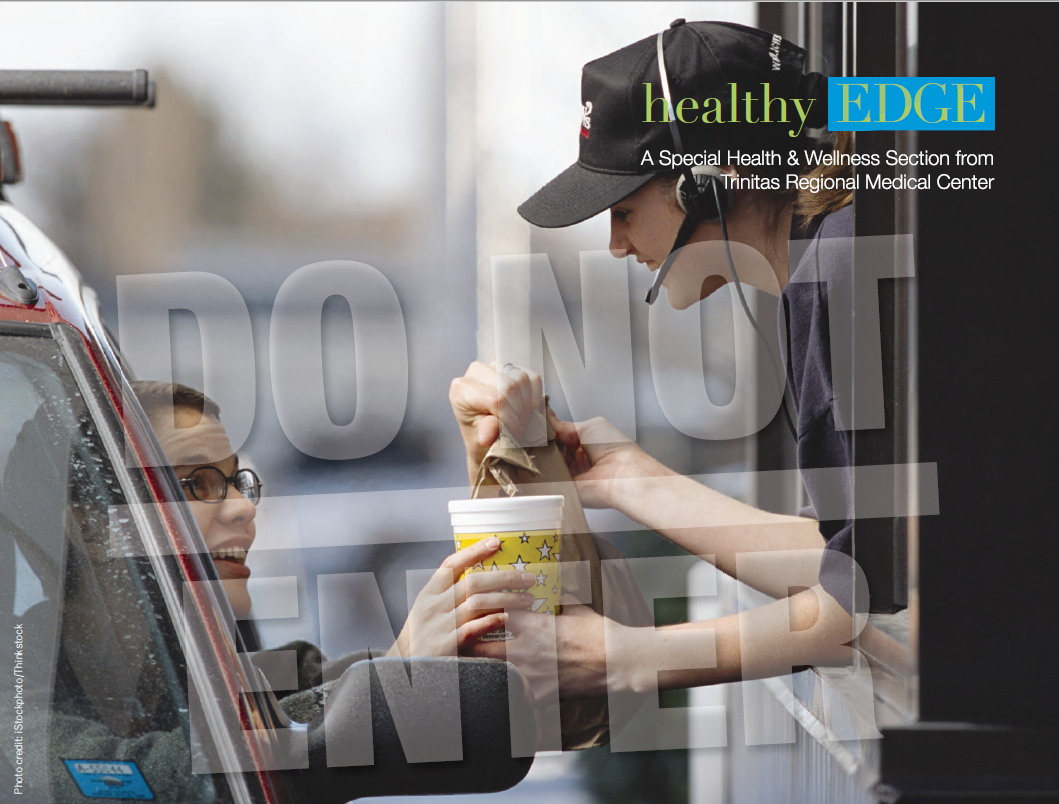
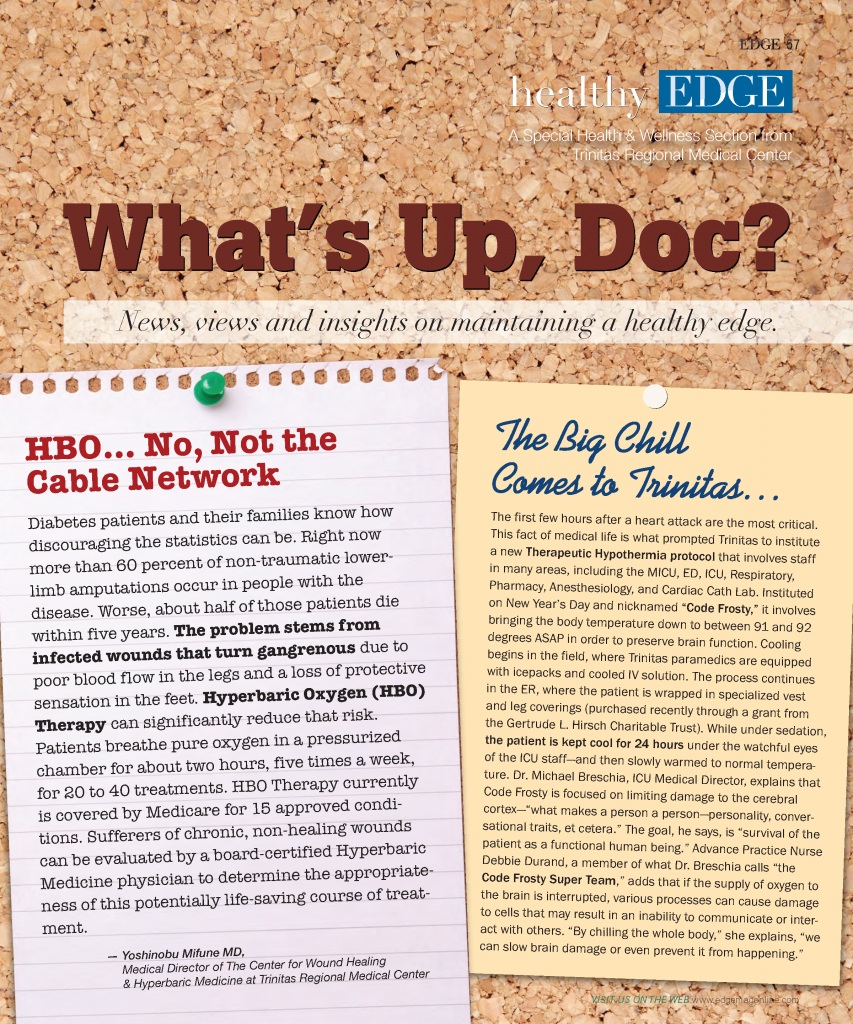
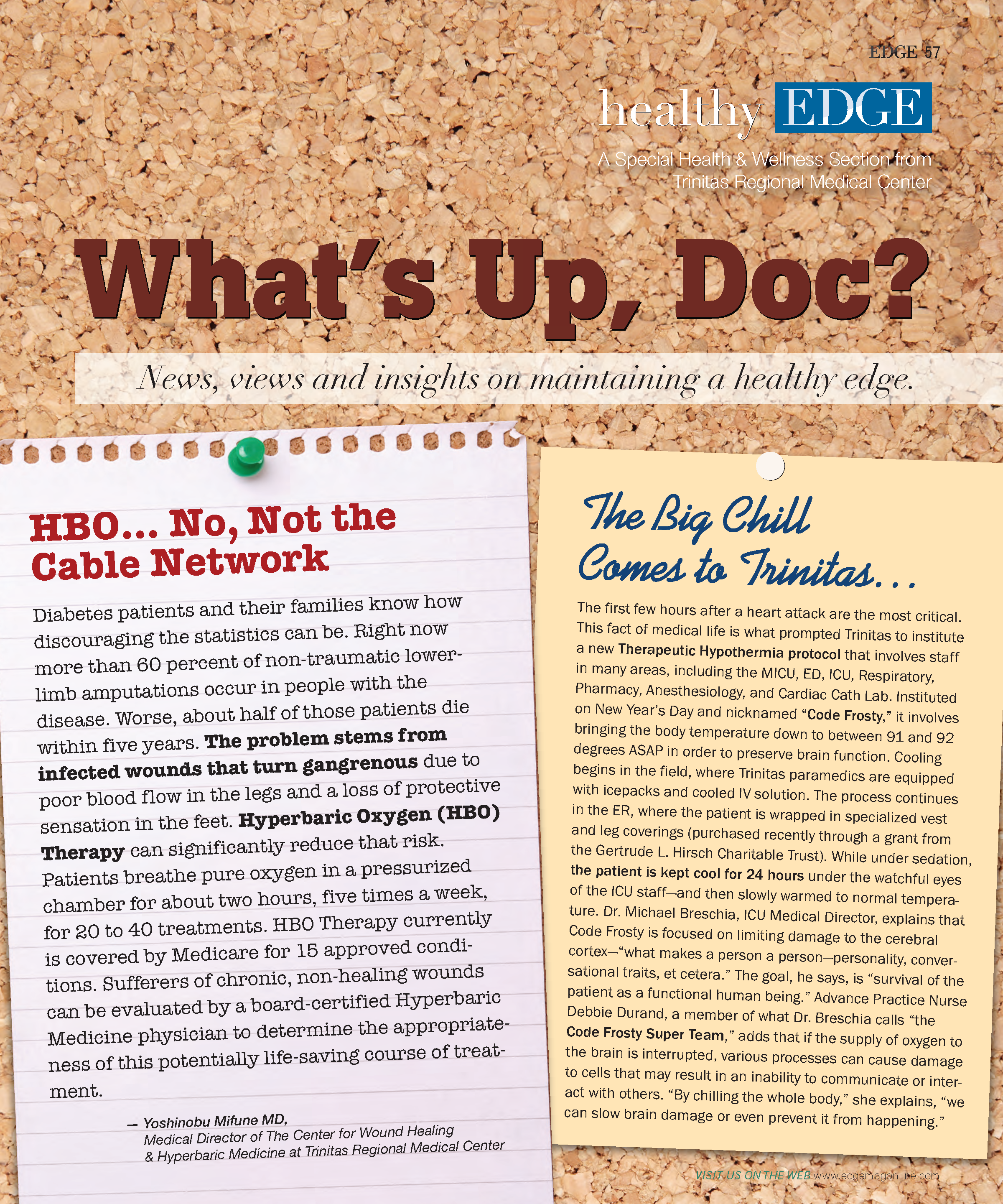
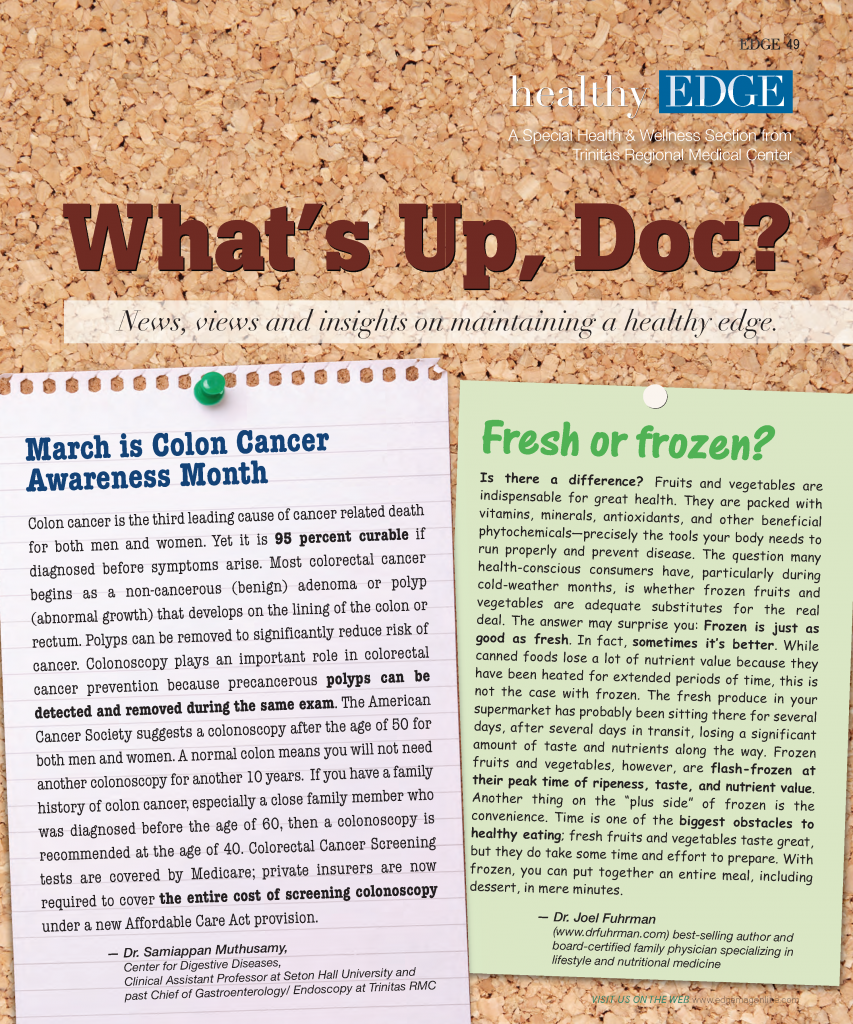
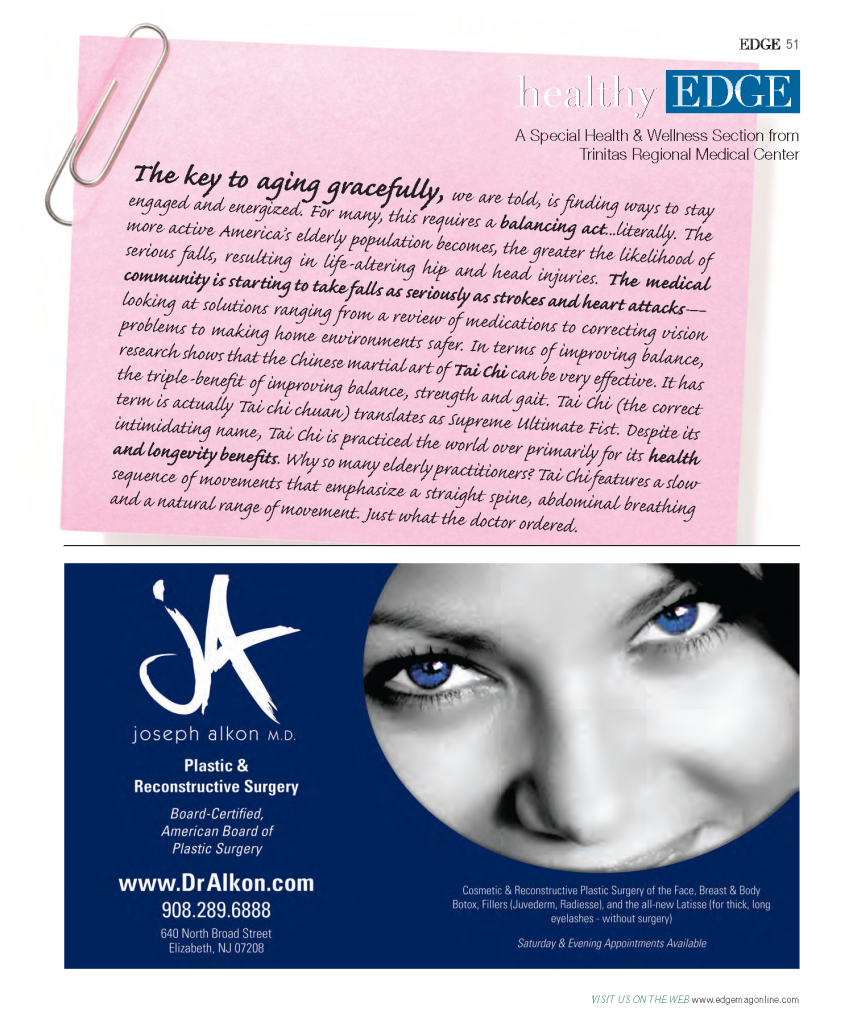

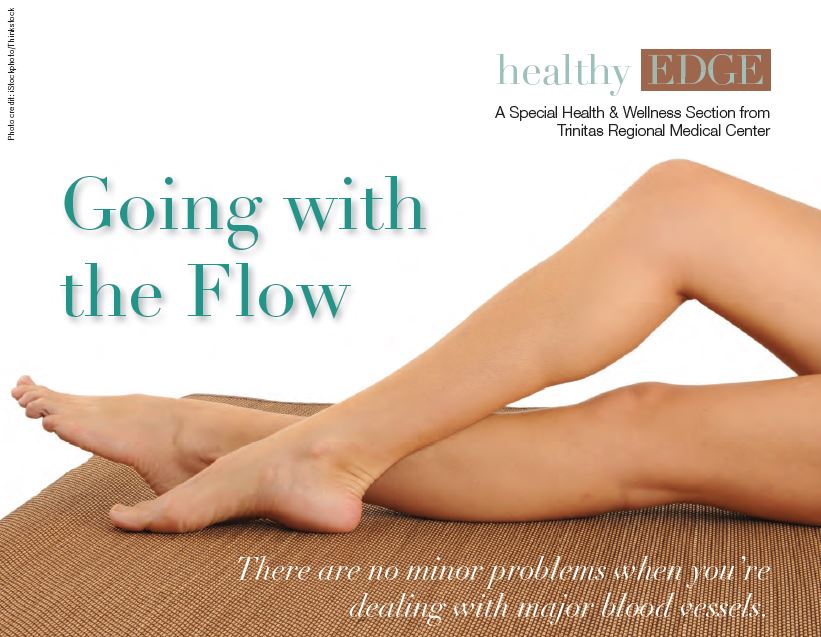
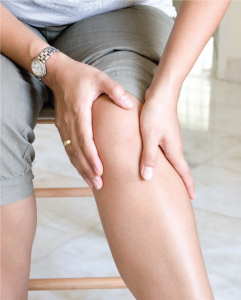 surgeon, Dr. Cuadra is a specialist who treats diseases of the major blood vessels. A member of the Cardiovascular Care Group (with offices at Trinitas and in Westfield, Springfield and Belleville), he treats problems with the carotid arteries in the neck, as well as the veins and arteries in the abdomen, arms and lower extremities. One of Dr. Cuadra’s specialties is called a carotid endarterectomy. In lay terms, this is a surgical procedure that addresses blockages in the artery feeding the brain. Plaque can build up and potentially cause a stroke. The surgery literally “shells out,” or removes, the plaque through a small neck incision. Although the condition is extremely serious, the surgical prognosis is excellent and recovery time is relatively short. Typically, it involves only an overnight hospital stay. Within the past decade, there have been other advances in the development of less invasive treatments for vascular system disorders. Most of these involve the use of stents, which are applied through a catheter inserted through the groin area. The less invasive nature of this procedure certainly makes it more attractive to patients. Vascular surgeons routinely perform angioplasty to repair arteries that are blocked or narrowed. There has been much recent research and discussion about the relative efficacy of stents compared to surgery. The much-publicized CREST Trial has indicated that stents have no statistical advantage over surgery and, in certain cases, might even run a higher risk of subsequent stroke. However, Dr. Cuadra is uniquely qualified to perform either angioplasty or surgery. He has found that some patients have better results with angioplasty and stents, while others benefit more from surgery. Another problem that can be addressed by inserting a stent is an aneurysm. In such a case, an artery develops a bulge (widening) rather than a blockage. Over time, this can cause a weakening in the arterial wall. A vascular surgeon will perform a procedure to insert a specialized stent that allows blood to pass through it removing the pressure on the arterial wall (the aneurysm) thereby reducing the risk of rupture. At present, dialysis patients constitute approximately 50% of Dr. Cuadra’s group practice. In cases of kidney failure— which requires hemodialysis to remove toxic waste and excess fluid from the bloodstream—surgery is done to establish the necessary connection between an artery and a vein thereby allowing for dialysis to be performed. Of the remaining 50%, different people land in his office in a number of different ways. Many patients come via their PCP referral already suffering from obesity and/or diabetes; their doctor may have found an abnormality through physical examination or through an ultrasound, or some other procedure such as a CT scan. Others come because of physical symptoms such as loss of circulation to the legs causing pain, ulcerations, and even gangrene in the extremity. Although Dr. Cuadra says he enjoys working with patients to prevent the onset of vascular disease, he embraces the myriad challenges he faces every day. Being a surgeon suits him, he says. “I like using my hands to solve relatively serious patient problems. Surgery is more rewarding to me than some other specialties. I can see a problem, diagnose it and fix it in a relatively short time period.” EDGE
surgeon, Dr. Cuadra is a specialist who treats diseases of the major blood vessels. A member of the Cardiovascular Care Group (with offices at Trinitas and in Westfield, Springfield and Belleville), he treats problems with the carotid arteries in the neck, as well as the veins and arteries in the abdomen, arms and lower extremities. One of Dr. Cuadra’s specialties is called a carotid endarterectomy. In lay terms, this is a surgical procedure that addresses blockages in the artery feeding the brain. Plaque can build up and potentially cause a stroke. The surgery literally “shells out,” or removes, the plaque through a small neck incision. Although the condition is extremely serious, the surgical prognosis is excellent and recovery time is relatively short. Typically, it involves only an overnight hospital stay. Within the past decade, there have been other advances in the development of less invasive treatments for vascular system disorders. Most of these involve the use of stents, which are applied through a catheter inserted through the groin area. The less invasive nature of this procedure certainly makes it more attractive to patients. Vascular surgeons routinely perform angioplasty to repair arteries that are blocked or narrowed. There has been much recent research and discussion about the relative efficacy of stents compared to surgery. The much-publicized CREST Trial has indicated that stents have no statistical advantage over surgery and, in certain cases, might even run a higher risk of subsequent stroke. However, Dr. Cuadra is uniquely qualified to perform either angioplasty or surgery. He has found that some patients have better results with angioplasty and stents, while others benefit more from surgery. Another problem that can be addressed by inserting a stent is an aneurysm. In such a case, an artery develops a bulge (widening) rather than a blockage. Over time, this can cause a weakening in the arterial wall. A vascular surgeon will perform a procedure to insert a specialized stent that allows blood to pass through it removing the pressure on the arterial wall (the aneurysm) thereby reducing the risk of rupture. At present, dialysis patients constitute approximately 50% of Dr. Cuadra’s group practice. In cases of kidney failure— which requires hemodialysis to remove toxic waste and excess fluid from the bloodstream—surgery is done to establish the necessary connection between an artery and a vein thereby allowing for dialysis to be performed. Of the remaining 50%, different people land in his office in a number of different ways. Many patients come via their PCP referral already suffering from obesity and/or diabetes; their doctor may have found an abnormality through physical examination or through an ultrasound, or some other procedure such as a CT scan. Others come because of physical symptoms such as loss of circulation to the legs causing pain, ulcerations, and even gangrene in the extremity. Although Dr. Cuadra says he enjoys working with patients to prevent the onset of vascular disease, he embraces the myriad challenges he faces every day. Being a surgeon suits him, he says. “I like using my hands to solve relatively serious patient problems. Surgery is more rewarding to me than some other specialties. I can see a problem, diagnose it and fix it in a relatively short time period.” EDGE  If you’re planning to make 2011 the year you lose weight and get fit, join the club: Studies show these are the most common resolutions people make come January 1st. Good luck to you; the grim reality is that most of the people who start the year off wanting to slim down don’t end up succeeding. The same goes for other popular New Year’s vows—stop smoking, get out of debt, help others, etc., etc. etc. The bottom line is that we just aren’t wired to break habits overnight that we’ve developed over 10, 20 or 30 years. As individuals, human beings tend to value their individuality. As a species, we’re just plain stubborn. Some great minds have weighed in on this subject. The controversial author Anaïs Nin insisted she made no resolutions to curb her habits, because “the habit of making plans, of criticizing, sanctioning and molding my life, is too much of a daily event for me.” Sculptor Henry Moore preferred to “think in terms of the day’s resolutions, not the year’s.” Writer Oscar Wilde, whose list of questionable habits was practically endless, characterized resolutions as “checks that men draw on a bank where they have no account.” Comic Joey Adams’s favorite party toast was “May all your troubles last as long as your New Year’s resolutions.” Mark Twain evaluated New Year’s resolutions with a single word: Humbug. Given this overwhelming preponderance of intellectual evidence, what chance do we mere mortals have to drop a few pounds and elevate our fitness? According to Michelle Ali, a registered dietician at Trinitas Regional Medical Center, there are 10 things we can do to improve the odds:
If you’re planning to make 2011 the year you lose weight and get fit, join the club: Studies show these are the most common resolutions people make come January 1st. Good luck to you; the grim reality is that most of the people who start the year off wanting to slim down don’t end up succeeding. The same goes for other popular New Year’s vows—stop smoking, get out of debt, help others, etc., etc. etc. The bottom line is that we just aren’t wired to break habits overnight that we’ve developed over 10, 20 or 30 years. As individuals, human beings tend to value their individuality. As a species, we’re just plain stubborn. Some great minds have weighed in on this subject. The controversial author Anaïs Nin insisted she made no resolutions to curb her habits, because “the habit of making plans, of criticizing, sanctioning and molding my life, is too much of a daily event for me.” Sculptor Henry Moore preferred to “think in terms of the day’s resolutions, not the year’s.” Writer Oscar Wilde, whose list of questionable habits was practically endless, characterized resolutions as “checks that men draw on a bank where they have no account.” Comic Joey Adams’s favorite party toast was “May all your troubles last as long as your New Year’s resolutions.” Mark Twain evaluated New Year’s resolutions with a single word: Humbug. Given this overwhelming preponderance of intellectual evidence, what chance do we mere mortals have to drop a few pounds and elevate our fitness? According to Michelle Ali, a registered dietician at Trinitas Regional Medical Center, there are 10 things we can do to improve the odds: 

 the mini-bouts of depression and anger that sometimes accompany this season are very real. The holiday blues can grip even the happiest, most well-adjusted of us with little or no warning. Understanding where these feelings come from, as well as your options for addressing them, can go a long way toward making it to January with your sanity intact. According to Dr. Rodger Goddard, who has served as Chief Psychologist at Trinitas Regional Medical Center for more than two decades, stress is almost always the trigger. And holiday stress can come from many sources. “At the end of the year, during the holidays, we reflect on our lives,” he explains. “When we reflect, we can get nervous about many things. For instance, many of us now face intense financial stress due to the state of the economy. This kind of reflection often leads us to dwell on our shortcomings and what we don’t have, rather than our accomplishments and the miracle of just being alive.” Dealing with relatives can just compound the situation. Tension between different family members, dwelling on past hurts or injustices, rivalries and jealousies can bring old wounds back to the surface. In this environment, little things—such as where to eat, what to eat and who sits where—can become incredibly stressful and suck the joy out of what should be pleasant reconnections and reunions. “On top of this,” Dr. Goddard adds, “we often eat and drink too much. The result is body discomfort, which contributes to distressing emotions.” The media can play a leading role in feelings of depression and anger. Movies, music, television shows and commercials all make the holidays out to be a magical time of happiness and perfection. To feel otherwise just feels wrong. “We live in reality, not a movie,” says Dr. Goddard. “Holidays cramp our schedule—overloading us with shopping, socializing, preparations and party-going. The holiday season has become hyper-commercialized, giving us the message that love is shown through material gift-giving. Under these conditions, we can feel that what we give and what we get are being constantly evaluated—which leads to even more stress.”
the mini-bouts of depression and anger that sometimes accompany this season are very real. The holiday blues can grip even the happiest, most well-adjusted of us with little or no warning. Understanding where these feelings come from, as well as your options for addressing them, can go a long way toward making it to January with your sanity intact. According to Dr. Rodger Goddard, who has served as Chief Psychologist at Trinitas Regional Medical Center for more than two decades, stress is almost always the trigger. And holiday stress can come from many sources. “At the end of the year, during the holidays, we reflect on our lives,” he explains. “When we reflect, we can get nervous about many things. For instance, many of us now face intense financial stress due to the state of the economy. This kind of reflection often leads us to dwell on our shortcomings and what we don’t have, rather than our accomplishments and the miracle of just being alive.” Dealing with relatives can just compound the situation. Tension between different family members, dwelling on past hurts or injustices, rivalries and jealousies can bring old wounds back to the surface. In this environment, little things—such as where to eat, what to eat and who sits where—can become incredibly stressful and suck the joy out of what should be pleasant reconnections and reunions. “On top of this,” Dr. Goddard adds, “we often eat and drink too much. The result is body discomfort, which contributes to distressing emotions.” The media can play a leading role in feelings of depression and anger. Movies, music, television shows and commercials all make the holidays out to be a magical time of happiness and perfection. To feel otherwise just feels wrong. “We live in reality, not a movie,” says Dr. Goddard. “Holidays cramp our schedule—overloading us with shopping, socializing, preparations and party-going. The holiday season has become hyper-commercialized, giving us the message that love is shown through material gift-giving. Under these conditions, we can feel that what we give and what we get are being constantly evaluated—which leads to even more stress.”
 According to Dr. Goddard, your anti-stress strategy should look something like this:
According to Dr. Goddard, your anti-stress strategy should look something like this:

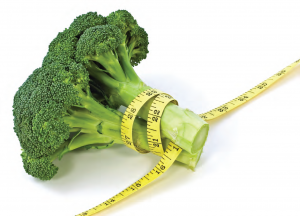 Trinitas Regional Medical Center, Dr. Ari S. Eckman, M.D., sees a steady stream of patients dealing with diabetes—a disease approaching epidemic proportions— and also hypothyroidism, another disorder that is growing, particularly among women. When asked if his high-risk patients were better dieters than most, the Chief of TRMC’s Division of Endocrinology, Diabetes & Metabolism said that yes, initially they are. “But many do lapse over time,” he admits. Apparently, risk alone is no guarantee of success. Dr. Eckman is quick to confirm this fact. He maintains that dieting is not so much about food as it is about lifestyle. The root of the word “diet” actually comes from the Greek word diaita, which means a “prescribed way of living.” Dieting, he insists, doesn’t have to mean depriving. That being said, he cautions, the whole point of dieting is to lose weight. “Make no mistake about that.” The Power of Positive Eating Google “diet” on your computer and the results are overwhelming. You’ll discover page after page of sites that are overflowing with imaginative menus and mouthwatering recipes. Whichever one you choose, says Dr. Eckman, you can increase the chance for success by following these ground rules: Spice Up Your Life Although salt can amp up flavor, there are a lot of other herbs and spices, both dried and fresh, that can compensate: pepper, oregano, basil, cumin, garlic, cilantro and the well-sung quartet of parsley, sage, rosemary, and thyme.
Trinitas Regional Medical Center, Dr. Ari S. Eckman, M.D., sees a steady stream of patients dealing with diabetes—a disease approaching epidemic proportions— and also hypothyroidism, another disorder that is growing, particularly among women. When asked if his high-risk patients were better dieters than most, the Chief of TRMC’s Division of Endocrinology, Diabetes & Metabolism said that yes, initially they are. “But many do lapse over time,” he admits. Apparently, risk alone is no guarantee of success. Dr. Eckman is quick to confirm this fact. He maintains that dieting is not so much about food as it is about lifestyle. The root of the word “diet” actually comes from the Greek word diaita, which means a “prescribed way of living.” Dieting, he insists, doesn’t have to mean depriving. That being said, he cautions, the whole point of dieting is to lose weight. “Make no mistake about that.” The Power of Positive Eating Google “diet” on your computer and the results are overwhelming. You’ll discover page after page of sites that are overflowing with imaginative menus and mouthwatering recipes. Whichever one you choose, says Dr. Eckman, you can increase the chance for success by following these ground rules: Spice Up Your Life Although salt can amp up flavor, there are a lot of other herbs and spices, both dried and fresh, that can compensate: pepper, oregano, basil, cumin, garlic, cilantro and the well-sung quartet of parsley, sage, rosemary, and thyme. Most Americans need to reduce their daily salt intake. This is doubly true for people trying to lose weight. Think Outside the Box Get creative in your kitchen. Take advantage of seasonal produce. Cook veggies several different ways (roast, steam, grill) for different taste and texture…and raw is always beautiful. Make fruit a part of your meal to stave off a major sugar craving. Dress Up Your Diet Visually feast, don’t just blindly eat! Set a pretty plate. Garnish your heart out. Color-coordinate healthy food choices. Use your best china. Sip water out of a crystal goblet. Presentation goes a long way—cater to all of your senses, not just your taste buds. Move Away from the Kitchen At home, dine someplace other than where the food is, namely the kitchen. You’ll have to get up for second helpings. The extra steps will make you take notice of how much you’re consuming. Work In a Workout A diet without exercise is a recipe for failure. Find 30 minutes each day to break a sweat with some cardio activity, and not necessarily all in a single interval. Park your car a little farther from the office or the supermarket. If you work at home, devote the commuting time saved to exercise. No buts to getting off your butt. Lead Yourself Not into Temptation Drive by the driveins. Clean out your cupboards. Eat five to six small meals a day rather than only two; your body seeks to metabolize— deny it by skipping a meal and you’ll overeat at the next. Monitor the Usual Suspects Forego the fad diets; better to identify your specific food weaknesses and just stay away from them. That way a minor slip-up won’t lead to a major binge! Among the same search-engine results that yield great recipes for different diets, you will also find lengthy dissertations on the challenges to success: temptation, boredom, stress, self-indulgence and the need for instant gratification. To that, says Dr. Eckman, you can add resentment. Nothing can sabotage a diet’s success more than hating the fact that you have to diet at all. Ultimately, he says, we will comfort ourselves by giving in to cravings. We’ll indulge ourselves with dangerous “treats.” We’ll eat, drink and yet we still won’t feel particularly merry. Denial is also a definite diet-killer, adds Dr. Eckman. “Too often I hear patients claim that they don’t eat much! The problem is how much is ‘much’ to them? And it may not even be how much they eat, but how wrong they eat,” he says. “If you can’t see the real you when you look in the mirror, then maybe you need to go out and buy a good scale…and then be sure to step on it.” The numbers won’t lie. EDGE
Most Americans need to reduce their daily salt intake. This is doubly true for people trying to lose weight. Think Outside the Box Get creative in your kitchen. Take advantage of seasonal produce. Cook veggies several different ways (roast, steam, grill) for different taste and texture…and raw is always beautiful. Make fruit a part of your meal to stave off a major sugar craving. Dress Up Your Diet Visually feast, don’t just blindly eat! Set a pretty plate. Garnish your heart out. Color-coordinate healthy food choices. Use your best china. Sip water out of a crystal goblet. Presentation goes a long way—cater to all of your senses, not just your taste buds. Move Away from the Kitchen At home, dine someplace other than where the food is, namely the kitchen. You’ll have to get up for second helpings. The extra steps will make you take notice of how much you’re consuming. Work In a Workout A diet without exercise is a recipe for failure. Find 30 minutes each day to break a sweat with some cardio activity, and not necessarily all in a single interval. Park your car a little farther from the office or the supermarket. If you work at home, devote the commuting time saved to exercise. No buts to getting off your butt. Lead Yourself Not into Temptation Drive by the driveins. Clean out your cupboards. Eat five to six small meals a day rather than only two; your body seeks to metabolize— deny it by skipping a meal and you’ll overeat at the next. Monitor the Usual Suspects Forego the fad diets; better to identify your specific food weaknesses and just stay away from them. That way a minor slip-up won’t lead to a major binge! Among the same search-engine results that yield great recipes for different diets, you will also find lengthy dissertations on the challenges to success: temptation, boredom, stress, self-indulgence and the need for instant gratification. To that, says Dr. Eckman, you can add resentment. Nothing can sabotage a diet’s success more than hating the fact that you have to diet at all. Ultimately, he says, we will comfort ourselves by giving in to cravings. We’ll indulge ourselves with dangerous “treats.” We’ll eat, drink and yet we still won’t feel particularly merry. Denial is also a definite diet-killer, adds Dr. Eckman. “Too often I hear patients claim that they don’t eat much! The problem is how much is ‘much’ to them? And it may not even be how much they eat, but how wrong they eat,” he says. “If you can’t see the real you when you look in the mirror, then maybe you need to go out and buy a good scale…and then be sure to step on it.” The numbers won’t lie. EDGE 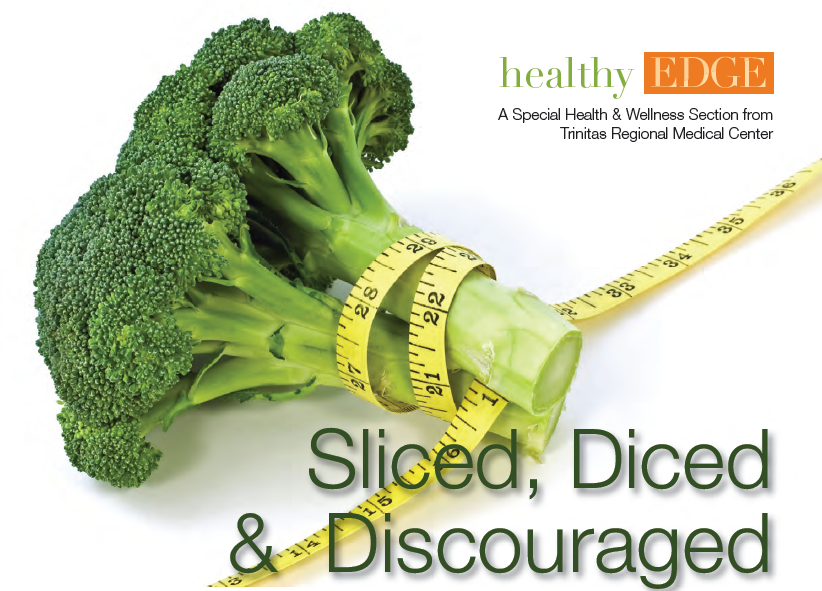
 trying to get healthy food into a picky eater. If the kid is yours, however, it’s no joke. There are reasons for your child’s peculiar eating habits, and things you can do to broaden his or her culinary horizons. First off, you may be surprised to learn that it’s hardly ever a matter of taste. Picky eating is a natural part of toddlerhood, as children express their independence. What parents may believe is a fussy eater may not actually be that at all. “Children don’t tend to eat as much at meals as adults expect them to eat, and babies spit out their food, leading parents to believe that they don’t like it,” says Dr. Maria Padron, a pediatric and adolescent psychiatrist at Trinitas Regional Medical Center. “But babies taste food by spitting it out and licki
trying to get healthy food into a picky eater. If the kid is yours, however, it’s no joke. There are reasons for your child’s peculiar eating habits, and things you can do to broaden his or her culinary horizons. First off, you may be surprised to learn that it’s hardly ever a matter of taste. Picky eating is a natural part of toddlerhood, as children express their independence. What parents may believe is a fussy eater may not actually be that at all. “Children don’t tend to eat as much at meals as adults expect them to eat, and babies spit out their food, leading parents to believe that they don’t like it,” says Dr. Maria Padron, a pediatric and adolescent psychiatrist at Trinitas Regional Medical Center. “But babies taste food by spitting it out and licki ng it, and if parents believe their child doesn’t like it and don’t continue to introduce that food, it becomes a foreign food to them.” Well-meaning parents may try to cater to a picky eater, but experts say that that only backfires. “They create a monster,” Dr. Padron explains. “Unless there’s a medical contraindication, children should be ‘helped’ to eat everything that the family eats.” Easier said than done, right? Don’t give up until you’ve exhausted these strategies: Offer variety earlier. “Kids often become picky eaters because they haven’t been exposed to a lot of foods,” Dr. Padron says. “You should slowly expose children to different kinds of foods.” Hold your ground. Your child may decide to go on a hunger strike for a meal or two if you suddenly stop being a short order cook and insist that he eats what you’re eating, but he won’t hold out forever. “Kids may refuse to eat for a few meals, but as long as they’re healthy and still drinking liquids, it’s fine,” Dr. Padron says. “When he’s hungry, your child will eat.” Keep reintroducing the same food. “Parents need to be patient w
ng it, and if parents believe their child doesn’t like it and don’t continue to introduce that food, it becomes a foreign food to them.” Well-meaning parents may try to cater to a picky eater, but experts say that that only backfires. “They create a monster,” Dr. Padron explains. “Unless there’s a medical contraindication, children should be ‘helped’ to eat everything that the family eats.” Easier said than done, right? Don’t give up until you’ve exhausted these strategies: Offer variety earlier. “Kids often become picky eaters because they haven’t been exposed to a lot of foods,” Dr. Padron says. “You should slowly expose children to different kinds of foods.” Hold your ground. Your child may decide to go on a hunger strike for a meal or two if you suddenly stop being a short order cook and insist that he eats what you’re eating, but he won’t hold out forever. “Kids may refuse to eat for a few meals, but as long as they’re healthy and still drinking liquids, it’s fine,” Dr. Padron says. “When he’s hungry, your child will eat.” Keep reintroducing the same food. “Parents need to be patient w hen they’re introducing new foods, and not get upset if kids aren’t jumping to eat broccoli right away,” Dr. Padron advises. Even if your children didn’t like asparagus the first few times, all it may take is the repetition (or a new way of serving it) to make them like it the 10th time around. You just need to insist on one bite each time you serve it— if they still don’t like it, don’t force it. Get your kids involved. Take your kids along to the grocery store and let them choose something new to try in the produce department—and if you have the time, let them get involved in preparing the dinner, too. By allowing your child to have a say in what they’re eating and an investment in the meal, you may find that they’re more willing to eat the fruit they picked out or the side dish they helped make. Minimize distractions at dinnertime. If there are other forms of entertainment beyond eating—a TV, books or toys—that can keep kids from attending to the task at hand. Instead, look for ways to make the meal itself more entertaining, with a colorful variety of vegetables or interesting presentations. Seek help. Get your pediatrician on board, especially if it’s been a long-standing issue, where your child’s eating habits may have become ingrained. For more severe cases, your pediatrician may recommend speaking to an expert, such as a counselor or a speech or occupational therapist. Indeed, in some instances, picky eating can be the sign of a more serious issue—a sensory disorder or a mechanical issue with feeding. So when is the right time to call in professional help? “In children with feeding issues, it could be a textural or tactile issue, often with mushy foods like bananas or yogurt,” says Kevin Nelson, occupational therapist and Manager of Trinitas Children’s Therapy Services. “Or it can be a mechanical issue, where they simply don’t have the musculature in their mouth to handle that food.” Whatever the cause of a child’s pickiness, in the end the key is to work slowly. Your kid won’t become an adventurous eater overnight, and if the issues are more sensory or mechanical in nature, you may need to follow a much gentler, slower path toward introducing these foods.
hen they’re introducing new foods, and not get upset if kids aren’t jumping to eat broccoli right away,” Dr. Padron advises. Even if your children didn’t like asparagus the first few times, all it may take is the repetition (or a new way of serving it) to make them like it the 10th time around. You just need to insist on one bite each time you serve it— if they still don’t like it, don’t force it. Get your kids involved. Take your kids along to the grocery store and let them choose something new to try in the produce department—and if you have the time, let them get involved in preparing the dinner, too. By allowing your child to have a say in what they’re eating and an investment in the meal, you may find that they’re more willing to eat the fruit they picked out or the side dish they helped make. Minimize distractions at dinnertime. If there are other forms of entertainment beyond eating—a TV, books or toys—that can keep kids from attending to the task at hand. Instead, look for ways to make the meal itself more entertaining, with a colorful variety of vegetables or interesting presentations. Seek help. Get your pediatrician on board, especially if it’s been a long-standing issue, where your child’s eating habits may have become ingrained. For more severe cases, your pediatrician may recommend speaking to an expert, such as a counselor or a speech or occupational therapist. Indeed, in some instances, picky eating can be the sign of a more serious issue—a sensory disorder or a mechanical issue with feeding. So when is the right time to call in professional help? “In children with feeding issues, it could be a textural or tactile issue, often with mushy foods like bananas or yogurt,” says Kevin Nelson, occupational therapist and Manager of Trinitas Children’s Therapy Services. “Or it can be a mechanical issue, where they simply don’t have the musculature in their mouth to handle that food.” Whatever the cause of a child’s pickiness, in the end the key is to work slowly. Your kid won’t become an adventurous eater overnight, and if the issues are more sensory or mechanical in nature, you may need to follow a much gentler, slower path toward introducing these foods.

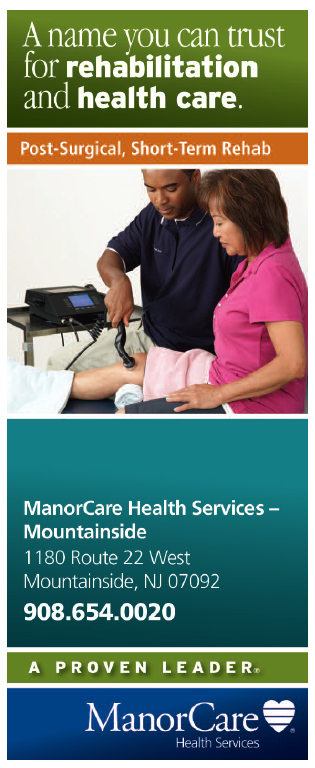

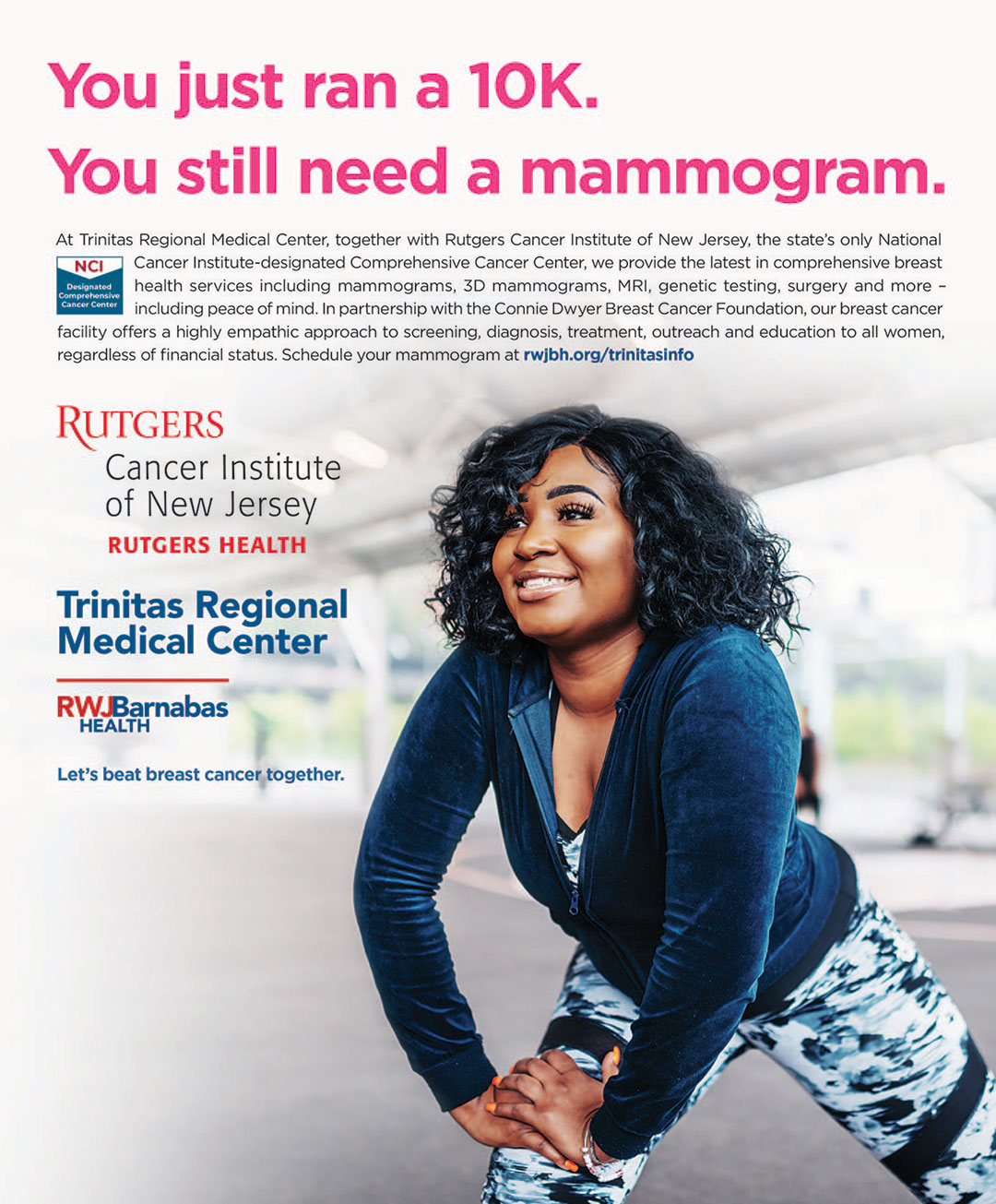

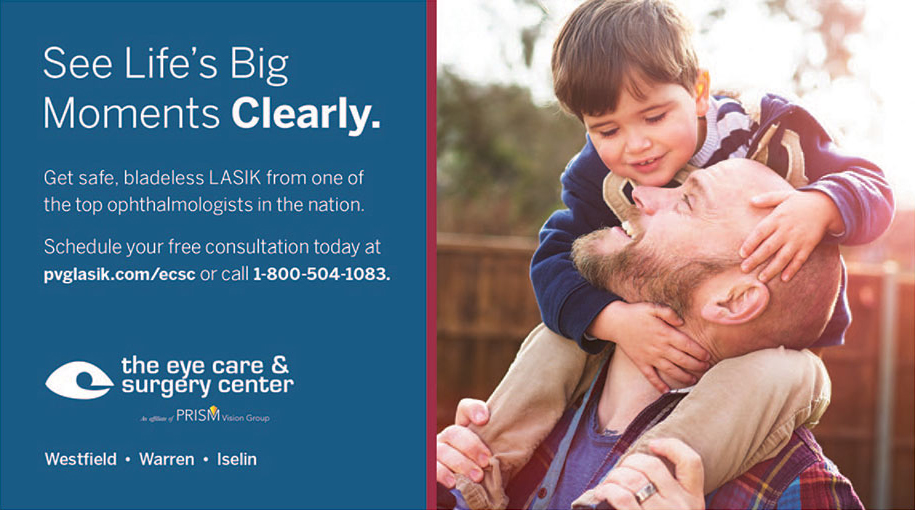
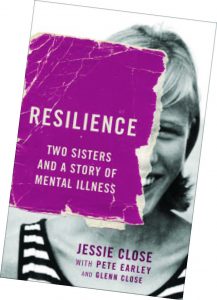










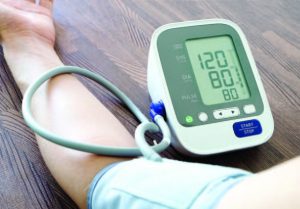


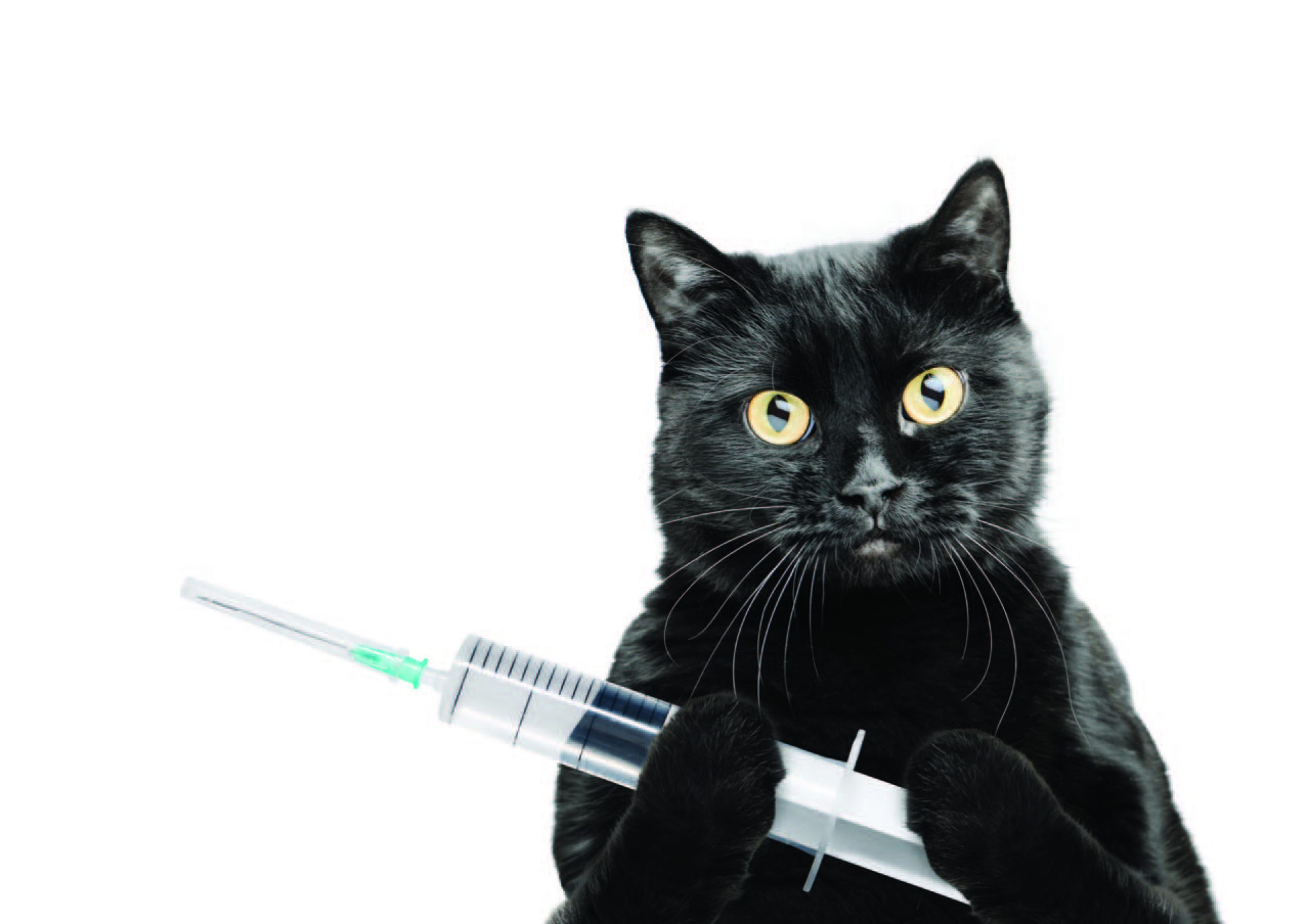


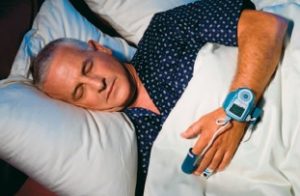 More than 23 million people in the United States have undiagnosed sleep apnea, which is kind of a staggering number given how simple testing has become. The Comprehensive Sleep Disorders Center at Trinitas, located at the Homewood Suites by Hilton, in Cranford, was seeing a steady stream of patients prior to the COVID-19 pandemic. While seeing patients and monitoring their sleep on-site became problematic in the spring of 2020, the center was able to shift gears and ramp up its home testing for sleep apnea thanks to a portable diagnostic device called the WatchPAT®, a small piece of equipment with three components. The PAT stands for Peripheral Arterial Tonometry, which measures arterial pulse volume changes to detect apnea events.
More than 23 million people in the United States have undiagnosed sleep apnea, which is kind of a staggering number given how simple testing has become. The Comprehensive Sleep Disorders Center at Trinitas, located at the Homewood Suites by Hilton, in Cranford, was seeing a steady stream of patients prior to the COVID-19 pandemic. While seeing patients and monitoring their sleep on-site became problematic in the spring of 2020, the center was able to shift gears and ramp up its home testing for sleep apnea thanks to a portable diagnostic device called the WatchPAT®, a small piece of equipment with three components. The PAT stands for Peripheral Arterial Tonometry, which measures arterial pulse volume changes to detect apnea events. Nearly half of all adults snore occasionally. About a quarter snore regularly. Often, snoring is the result of a treatable condition, such as a sinus infection or a deviated septum. The culprit may also be bulky throat muscles or a soft palate or uvula. And, of course, in cases when loud snoring or gasps are interspersed with pauses in breathing—sometimes 20 or 30 an hour—sleep apnea is a strong possibility.
Nearly half of all adults snore occasionally. About a quarter snore regularly. Often, snoring is the result of a treatable condition, such as a sinus infection or a deviated septum. The culprit may also be bulky throat muscles or a soft palate or uvula. And, of course, in cases when loud snoring or gasps are interspersed with pauses in breathing—sometimes 20 or 30 an hour—sleep apnea is a strong possibility. There are some instances where surgery is the best option. For instance, removing the adenoids and tonsils—which is the most common treatment of Obstructive Sleep Apnea in children—nasal polyps or anything else blocking the airway can solve the problem. You may also be a candidate for an uvulopalatopharyngoplasty (UPPP) to remove the excess tissue from the back of the throat.
There are some instances where surgery is the best option. For instance, removing the adenoids and tonsils—which is the most common treatment of Obstructive Sleep Apnea in children—nasal polyps or anything else blocking the airway can solve the problem. You may also be a candidate for an uvulopalatopharyngoplasty (UPPP) to remove the excess tissue from the back of the throat.
 In a day and age when social media and family drama pulls us in so many directions, and the line between work and home is increasingly blurred, the idea we grew up with—“everyone needs eight hours of sleep”—would almost seem quaint if it didn’t sound so crazy. And while some people can truly thrive on five or six hours a night, sleep experts maintain that the traditional range of seven to nine hours a night is still a solid number. Seniors can get away with slightly less, while children actually need more for proper growth and development. So when your teenager is heading into his or her tenth hour of unconsciousness, don’t take it personally. It’s just nature doing its job.
In a day and age when social media and family drama pulls us in so many directions, and the line between work and home is increasingly blurred, the idea we grew up with—“everyone needs eight hours of sleep”—would almost seem quaint if it didn’t sound so crazy. And while some people can truly thrive on five or six hours a night, sleep experts maintain that the traditional range of seven to nine hours a night is still a solid number. Seniors can get away with slightly less, while children actually need more for proper growth and development. So when your teenager is heading into his or her tenth hour of unconsciousness, don’t take it personally. It’s just nature doing its job.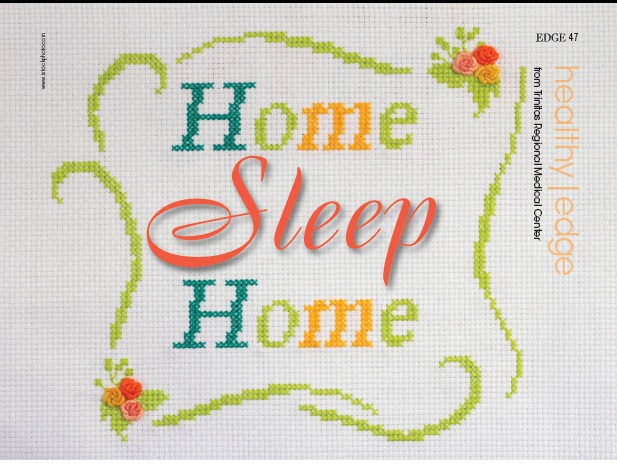

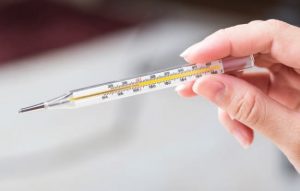 Interestingly, what all of the aforementioned measuring devices have in common is that they share a single ancestor, one that looked a lot like the old glass-and-mercury thermometer, which, not for nothing, should no longer be in your medicine cabinet (but probably still is). More on this in “Getting Rid of Mercury” on page 43.
Interestingly, what all of the aforementioned measuring devices have in common is that they share a single ancestor, one that looked a lot like the old glass-and-mercury thermometer, which, not for nothing, should no longer be in your medicine cabinet (but probably still is). More on this in “Getting Rid of Mercury” on page 43.
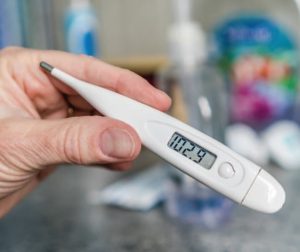 little bulb located on the business end of the thermometer. For infrared thermometers, a pyrometric sensor gathers the data. Once a reading is complete, you get a number—either as a digital readout, or using those hashmarks on an old-school thermometer.
little bulb located on the business end of the thermometer. For infrared thermometers, a pyrometric sensor gathers the data. Once a reading is complete, you get a number—either as a digital readout, or using those hashmarks on an old-school thermometer.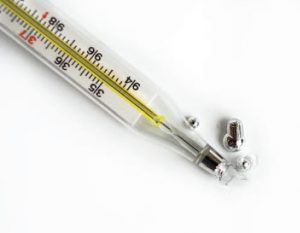 Do you have an old-school mercury and glass thermometer in your medicine cabinet? If so, be aware that it contains half a gram of elemental mercury. That’s not enough to kill you (or even seriously harm you) if you somehow swallowed it (the vapors from the mercury are actually far more harmful), but all the mercury adds up when people start throwing their old thermometers away by the tens of millions. To properly dispose of a mercury thermometer, place it inside a plastic container or glass jar, fill the container with something oil-absorbent (like cat litter or sand) and mark it “Contains Mercury” with a Sharpie. Your town or county will have a hazardous chemical drop-off site where you can dispose of it properly.
Do you have an old-school mercury and glass thermometer in your medicine cabinet? If so, be aware that it contains half a gram of elemental mercury. That’s not enough to kill you (or even seriously harm you) if you somehow swallowed it (the vapors from the mercury are actually far more harmful), but all the mercury adds up when people start throwing their old thermometers away by the tens of millions. To properly dispose of a mercury thermometer, place it inside a plastic container or glass jar, fill the container with something oil-absorbent (like cat litter or sand) and mark it “Contains Mercury” with a Sharpie. Your town or county will have a hazardous chemical drop-off site where you can dispose of it properly. While we’re on the topic of history, it’s worth noting that the basic principles behind the thermometer were known in ancient Greece more than 2,500 years ago. However, the first device you’d think of as approaching a “modern” thermometer was pioneered by Santorio Santorio (right) at the University of Padua in the early 1600s. Galileo, who was on a first-name basis with the professor, is believed to have had some input—as did other scientists who were exchanging ideas in Venice at the time. Temperature-taking was all the rage in 17th century Europe, it seems. Santorio’s invention used the expansion of water, not mercury, to show changes in temperature and was called a thermoscope. It became a thermometer after a standardized scale was added. The first scale measured only eight different “degrees.”
While we’re on the topic of history, it’s worth noting that the basic principles behind the thermometer were known in ancient Greece more than 2,500 years ago. However, the first device you’d think of as approaching a “modern” thermometer was pioneered by Santorio Santorio (right) at the University of Padua in the early 1600s. Galileo, who was on a first-name basis with the professor, is believed to have had some input—as did other scientists who were exchanging ideas in Venice at the time. Temperature-taking was all the rage in 17th century Europe, it seems. Santorio’s invention used the expansion of water, not mercury, to show changes in temperature and was called a thermoscope. It became a thermometer after a standardized scale was added. The first scale measured only eight different “degrees.” physicist proposed a new temperature scale, which used 100 to express the freezing point of water and 0 for the boiling point of water. His name was Anders Celsius (right), and his colleagues loved the idea…with one small tweak: They flipped the script, making 0 the cold end and 100 the hot end. Outside of the academic community, almost no one in America has the faintest idea how Celsius works, so don’t feel bad.
physicist proposed a new temperature scale, which used 100 to express the freezing point of water and 0 for the boiling point of water. His name was Anders Celsius (right), and his colleagues loved the idea…with one small tweak: They flipped the script, making 0 the cold end and 100 the hot end. Outside of the academic community, almost no one in America has the faintest idea how Celsius works, so don’t feel bad. The first doctor who stuck a thermometer into a person as part of his patient practice was Herman Boerhaave (left), a Dutch chemist and physician who founded the first European teaching hospital at the University of Leiden in the early 1700s. His patients were none too thrilled about the idea—it took up to a half-hour to obtain an accurate reading, so no matter the input, the process was tedious and unpleasant. And if you think that’s a long time, consider that it took 150 more years to cut the temperature-taking times down to five minutes.
The first doctor who stuck a thermometer into a person as part of his patient practice was Herman Boerhaave (left), a Dutch chemist and physician who founded the first European teaching hospital at the University of Leiden in the early 1700s. His patients were none too thrilled about the idea—it took up to a half-hour to obtain an accurate reading, so no matter the input, the process was tedious and unpleasant. And if you think that’s a long time, consider that it took 150 more years to cut the temperature-taking times down to five minutes. Allbutt (right). Just as thrilling was the fact that his clinical thermometer was only six inches long—half the (yikes) standard length during the early 1800s. Later in life, Allbutt was rewarded for his ingenuity by being appointed a Commissioner of Lunacy for England and Wales. Oh, and by the way, if you think wearing a mask and getting your forehead scanned is annoying, imagine waiting in line to get into Whole Foods only to encounter a 12-inch thermometer at the front door!
Allbutt (right). Just as thrilling was the fact that his clinical thermometer was only six inches long—half the (yikes) standard length during the early 1800s. Later in life, Allbutt was rewarded for his ingenuity by being appointed a Commissioner of Lunacy for England and Wales. Oh, and by the way, if you think wearing a mask and getting your forehead scanned is annoying, imagine waiting in line to get into Whole Foods only to encounter a 12-inch thermometer at the front door!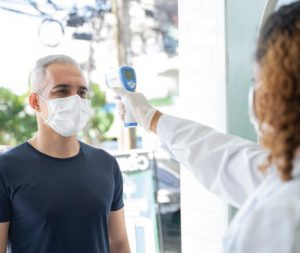 In conclusion, and to underscore an earlier point, the newer, safer methods for temperature-taking have made the mercury-and-glass thermometer entirely obsolete. Starting around 20 years ago, states began banning their sale and the National Institute of Standards and Technology stopped calibrating mercury thermometers a decade ago.
In conclusion, and to underscore an earlier point, the newer, safer methods for temperature-taking have made the mercury-and-glass thermometer entirely obsolete. Starting around 20 years ago, states began banning their sale and the National Institute of Standards and Technology stopped calibrating mercury thermometers a decade ago.
 Mercury isn’t the only substance used in thermometers. Think of all the souvenir and advertising thermometers you’ve seen in your life. Some people actually collect them. The red stuff they contain is dyed alcohol or ethanol. It’s not as accurate as mercury and is not dangerous if the thermometer breaks. The substance is accurate up to 172 degrees, so it’s really only good for measuring air and body temperature.
Mercury isn’t the only substance used in thermometers. Think of all the souvenir and advertising thermometers you’ve seen in your life. Some people actually collect them. The red stuff they contain is dyed alcohol or ethanol. It’s not as accurate as mercury and is not dangerous if the thermometer breaks. The substance is accurate up to 172 degrees, so it’s really only good for measuring air and body temperature.
 Coughing Up More for Cigarettes
Coughing Up More for Cigarettes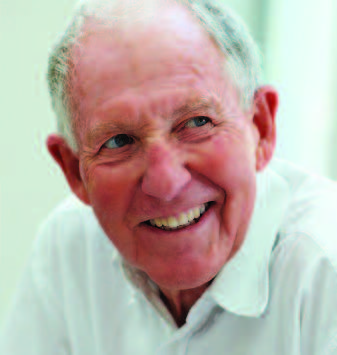 60 is the New…75?
60 is the New…75? Breaking Up is Hard to Do
Breaking Up is Hard to Do The One Percent Solution
The One Percent Solution
 Bipolar Breakthrough
Bipolar Breakthrough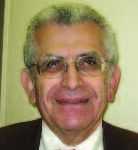
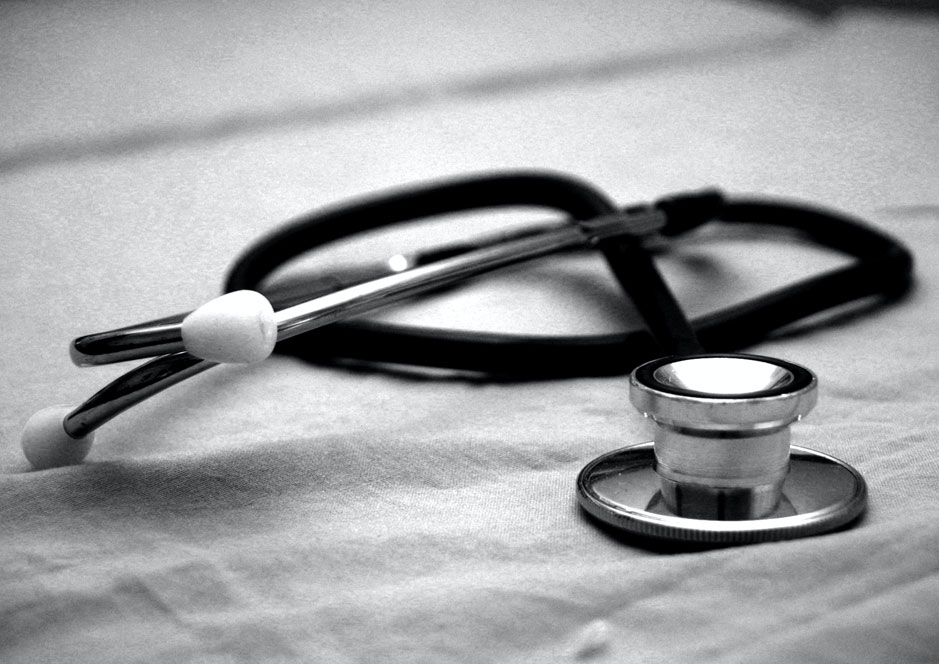
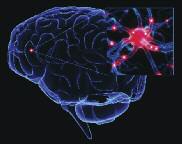 California Cool
California Cool Drop-Dead Good, Y’all
Drop-Dead Good, Y’all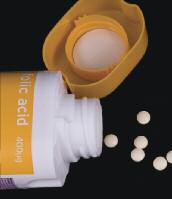 Link Between Folic Acid and Autism
Link Between Folic Acid and Autism The Slim Jim Diet
The Slim Jim Diet Oils Well that Ends Well?
Oils Well that Ends Well?